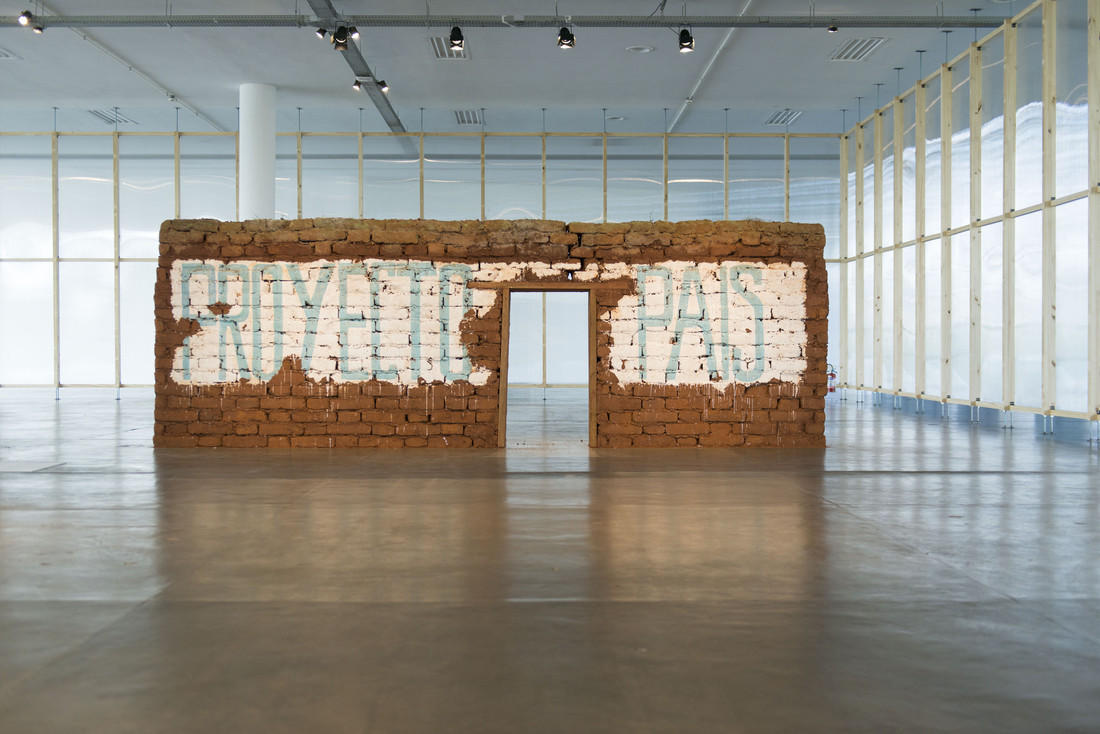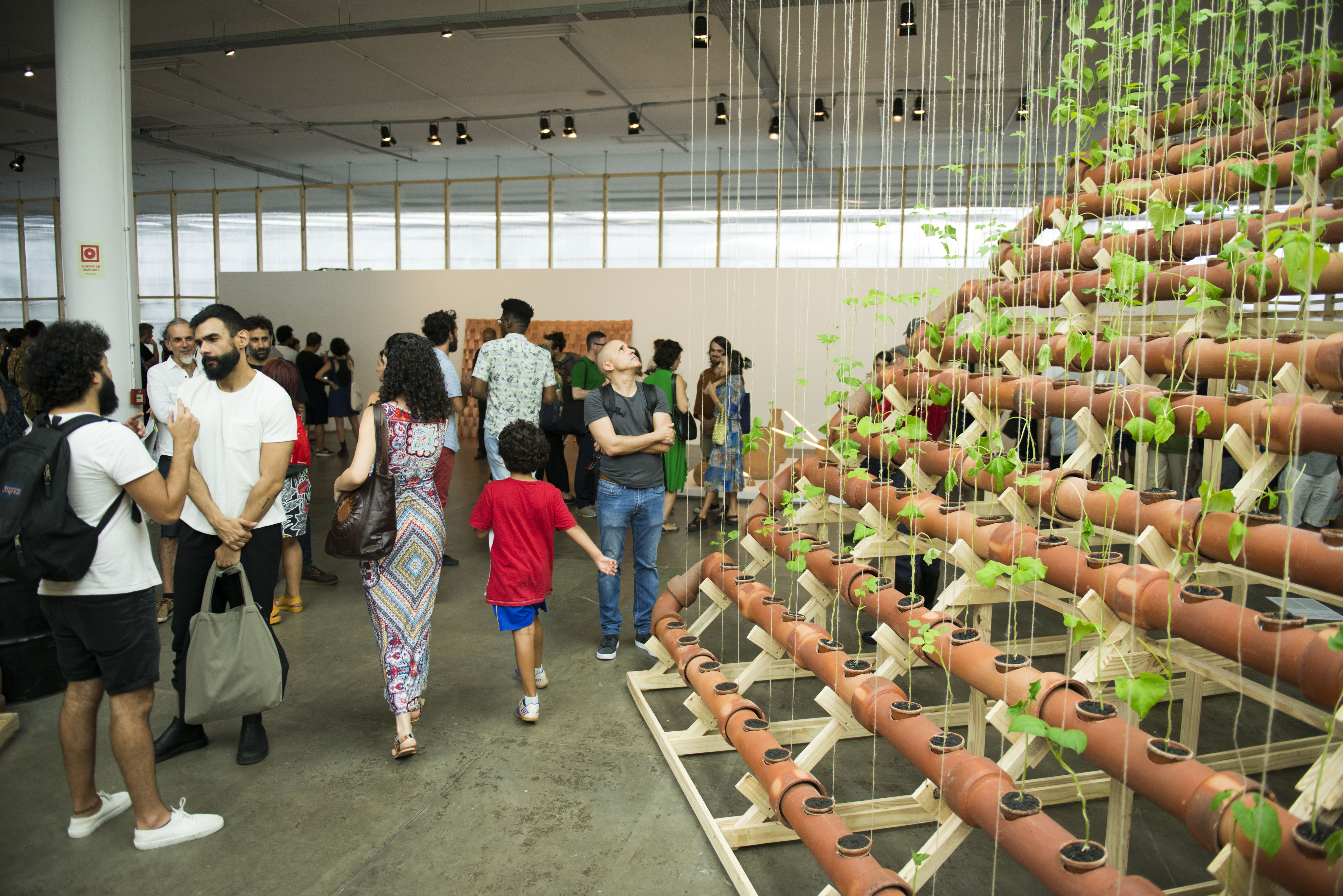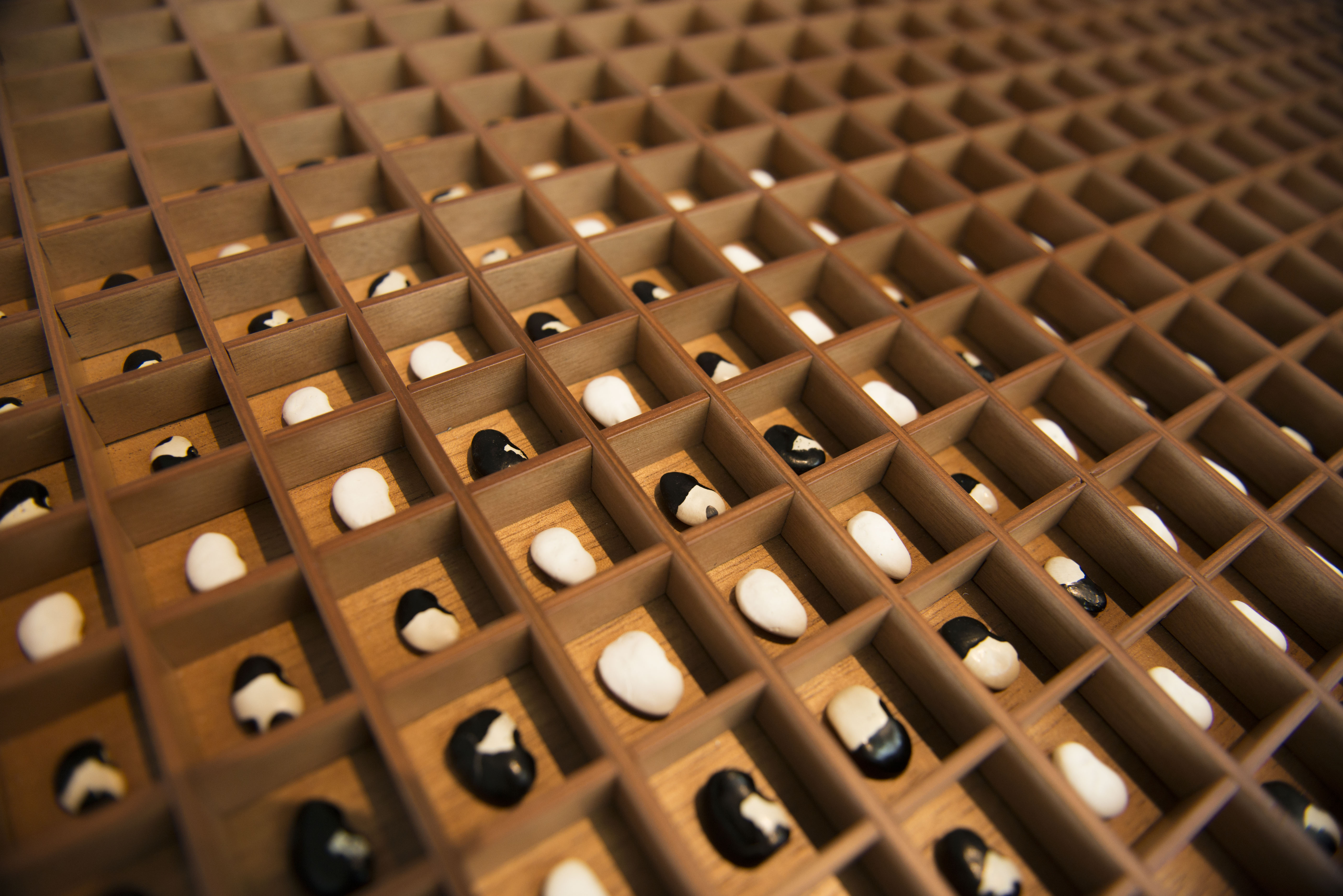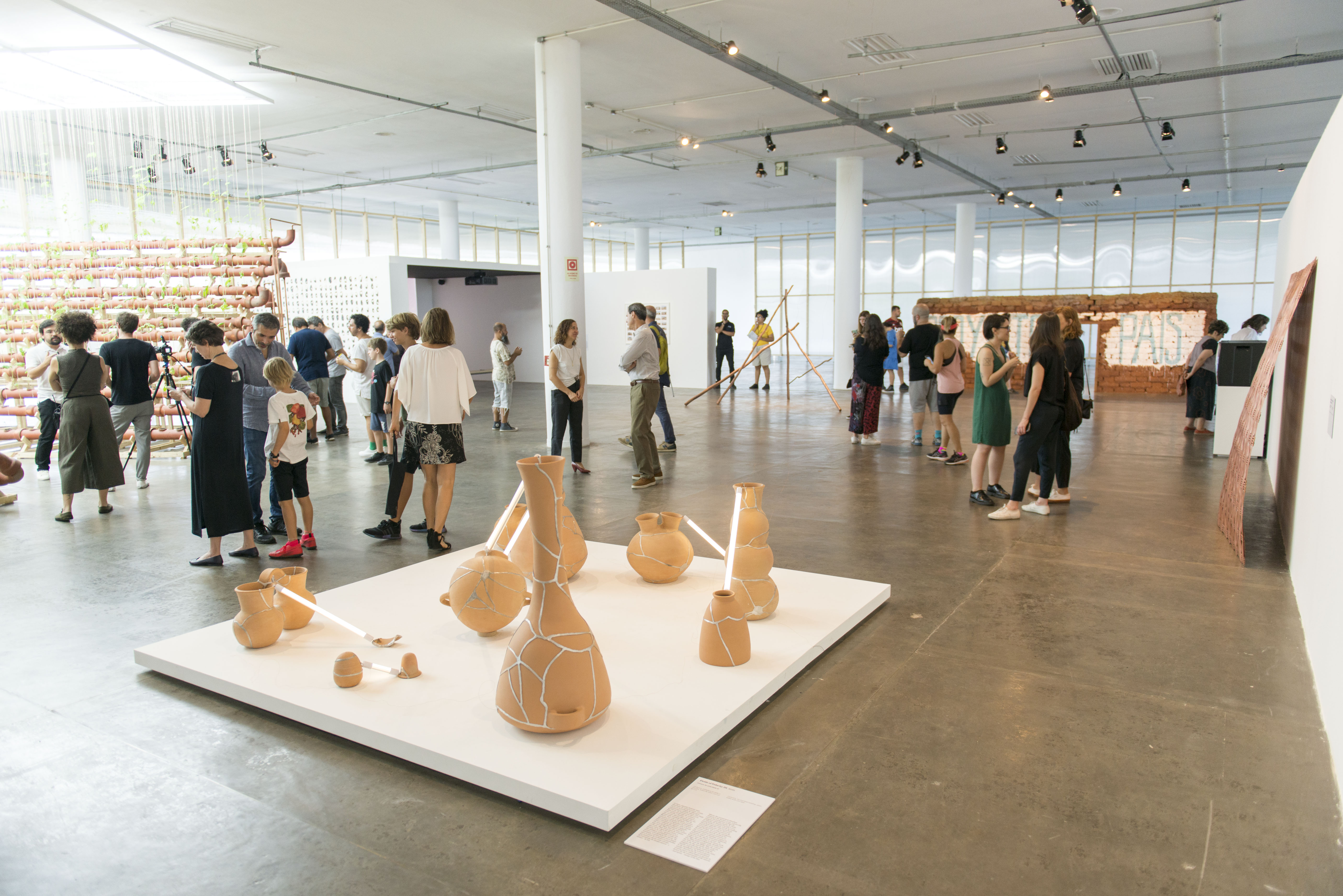The work by Ximena Garrido-Lecca (1980, Lima, Peru) is often based on the study of techniques and materials used in handicraft, art and architecture throughout Peruvian history. The installations presented at the 34th Bienal use ancestral ceramic techniques and weaving as well as materials such as copper, oil barrels, oil, wood, wire, nails and plants. One of her most emblematic works, Insurgencias botánicas: Phaseolus Lunatus [Botanical Insurgencies: Phaseolus Lunatus], 2017, is an installation with a hydroponic structure in which are planted seedlings of the bean species Phaseolus lunatus. As the plants grow throughout the year, the public have the opportunity to accompany different moments of the installation’s transformation, in a movement that symbolizes the process of the Bienal itself, which is being inaugurated now but will be enlarged, transformed and problematized until December. For Garrido-Lecca, the gesture of cultivating the beans becomes a symbolic reactivation of a supposed system of communication of the Moche culture, a pre-Incan Peruvian civilization that developed complex irrigation systems and which, according to some theories, used the spots present on these beans as signs in an ideogrammatic writing system.
Another notable work is the installation Proyecto país [Project Country], which is part of the series Paredes de progresso [Walls of Progress], produced by the artist between 2008 and 2012, based on research into advertising painted on adobe walls in Peru’s Vale Sagrado region. Built according to a traditional construction technique common throughout the country’s rural territory, these walls are frequently used to display political slogans and logotypes that gradually fade until disappearing completely, or the wall itself crumbles, since adobe, when exposed to the weather, breaks down bit by bit in the landscape. Proyecto país was the name of a small political party that participated in the 2006 Peruvian elections, but which wound up withdrawing from the running and disappearing due to a lack of followers.
To create Divergent Lots, Ximena Garrido-Lecca photographed Pucusana, a coastal district in the province of Lima, for three years (2010–2013). The artist documented a series of structures composed originally by bamboo panels and wooden posts, and which, over the years, begin to incorporate materials such as bricks and concrete. These temporary structures are built with the aim of laying claim to the land in these areas, which have received great migratory inflows since the 1950s, as populations leave the Andean agricultural regions to seek better conditions for life and work in areas of industrial and urban development. The migrant population often erects squatter settlements and seeks forms of survival linked to informal sectors of the economy. The video Líneas de divergencia [Divergent Lines] documents a recent moment in the occupations around Pucusana; the lines marked with chalk in the desert divide already registered parcels of land, demarcating new lots.
Carla Zaccagnini, guest curator of the 34th Bienal, explains: “We begin the 34th Bienal de São Paulo with this series of works by Ximena Garrido-Lecca, artworks that can help us see the relationships that exist between the invention of electricity, the mining of copper, the demarcation of the land, the depredation of the soil and the scattering of peoples. Because we know that art can give us tools to deal with difficult moments, when other languages are fruitless or absent.”
The exhibition is held in partnership with CCA Wattis (San Francisco, USA), which, in 2021, will hold a solo show by the artist as part of the 34th Bienal de São Paulo’s international collaborations.
Learn more about the artist here.
List of work – Ximena Garrido-Lecca solo exhibition here.
-
Caroline A. Jones, Eyesight Alone: Clement Greenberg’s Modernism and the Bureaucratization of the Senses (Chicago: University of Chicago Press, 2005).
-
Greenberg’s Modernism and the Bureaucratization of the Senses (Chicago: University of Chicago Press, 2005).






